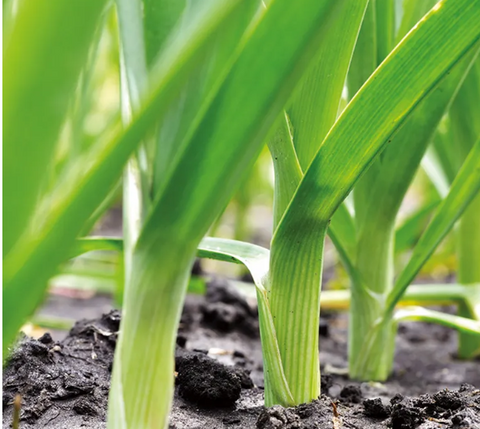Introduction
Coneflowers, with their vibrant hues and charming daisy-like blooms, add a delightful touch to any garden landscape. In this guide, we'll explore everything you need to know about growing and caring for these sunny beauties, from selecting the perfect varieties to harvesting their blooms for various uses.The following content also has some reference value for raised garden beds.
Overview of Coneflowers
Coneflowers, scientifically known as Echinacea, have a rich history dating back centuries. Originally native to North America, they were traditionally used by Native American tribes for their medicinal properties. Today, coneflowers are cherished not only for their aesthetic appeal but also for their role in supporting pollinators and beneficial insects in the garden. By growing coneflowers, you can enjoy their beauty while contributing to the biodiversity of your garden ecosystem.
Choosing the Perfect Spot for Coneflowers
When planning to grow coneflowers, it's essential to choose a suitable planting location that meets their specific requirements. Factors to consider include sunlight exposure, soil conditions, and drainage. Coneflowers thrive in full sun, so select a spot that receives at least six to eight hours of direct sunlight daily. Additionally, ensure the soil is well-drained and fertile, as coneflowers prefer slightly acidic to neutral soil pH.

Selecting Coneflower Varieties
Coneflowers come in a variety of species and cultivars, each with its own unique characteristics and growth habits. Popular species include Echinacea purpurea, Echinacea angustifolia, and Echinacea paradoxa, among others. When choosing coneflowers for your garden, consider factors such as bloom color, height, and bloom time. Whether you prefer classic purple coneflowers or seek out more unusual varieties in shades of pink, white, or orange, there's a coneflower to suit every garden style.
Preparing the Soil for Planting
Before planting coneflowers, it's essential to prepare the soil to provide the best growing conditions for these resilient perennials. Start by testing the soil pH to ensure it falls within the optimal range for coneflowers, typically between 6.0 and 7.0. If necessary, amend the soil with organic matter such as compost or well-rotted manure to improve fertility and drainage. Incorporating a balanced organic fertilizer can also help provide essential nutrients for healthy coneflower growth.
Planting Coneflowers
Whether starting from seeds or transplants, planting coneflowers is relatively straightforward. If planting seeds, sow them directly in the garden bed after the last frost date, lightly covering them with soil. For transplants, dig a hole slightly larger than the root ball and place the plant at the same level as it was in the container. Water thoroughly after planting to help establish the roots, and provide regular moisture until the plants are established.
Caring for Coneflowers
Coneflowers are low-maintenance plants that require minimal care once established in the garden. Water newly planted coneflowers regularly to keep the soil evenly moist, especially during hot and dry periods. However, once established, coneflowers are drought-tolerant and can withstand short periods of dryness. Fertilize coneflowers in early spring with a balanced fertilizer to promote healthy growth and abundant flowering. Deadhead spent blooms regularly to encourage continuous blooming throughout the growing season.
Dealing with Pests and Diseases
While coneflowers are relatively resistant to pests and diseases, they may occasionally encounter issues such as aphids, powdery mildew, or aster yellows. Monitor your plants regularly for signs of pest infestations or disease symptoms, such as distorted growth or yellowing leaves. Natural and organic methods, such as handpicking pests or spraying with insecticidal soap, can help control minor pest problems. Additionally, promoting good air circulation and avoiding overhead watering can help prevent fungal diseases like powdery mildew.
Companion Planting with Coneflowers
Coneflowers make excellent companions for a wide range of plants in the garden, thanks to their upright growth habit and attractive blooms. Pair them with other sun-loving perennials such as black-eyed Susans (Rudbeckia), bee balm (Monarda), and butterfly weed (Asclepias) to create a vibrant and pollinator-friendly garden display. The deep taproots of coneflowers also help improve soil structure and drainage, benefiting neighboring plants in the garden.

Extending the Blooming Season
While coneflowers typically bloom from early summer to fall, there are strategies you can employ to extend their blooming season and enjoy their colorful blooms for even longer. Choose a mix of coneflower varieties with different bloom times, including early, mid, and late-season varieties, to ensure continuous flowering throughout the growing season. Additionally, deadhead blooms regularly to encourage the plant to produce new flowers, prolonging the blooming period. Incorporating other late-blooming perennials and annuals into the garden will ensure a vibrant and ever-changing display of color from spring to fall.
Harvesting and Using Coneflower Blooms
In addition to their ornamental value in the garden, coneflower blooms have various practical uses, including floral arrangements, herbal teas, and medicinal remedies. Harvest coneflower blooms for fresh-cut bouquets when the flowers are fully open and at their peak of freshness. Remove stems early in the morning or late in the evening when the plants are well-hydrated to prolong vase life. Dry coneflower blooms for later use by hanging them upside down in a cool, dark place until fully dried. Once dried, coneflowers can be used in potpourri, herbal sachets, or brewed into a fragrant and healthful tea.
Conclusion
Coneflowers are truly versatile and rewarding plants that can brighten any garden with their vibrant blooms and easygoing nature. By following the tips outlined in this guide, you can successfully grow and care for coneflowers in your garden, creating a colorful and pollinator-friendly oasis that will delight you season after season. From selecting the perfect spot for planting to extending the blooming season and harvesting blooms for various uses, there's much to explore and enjoy with these sunny delights. Embrace the beauty and resilience of coneflowers, and let them transform your garden into a vibrant and thriving haven for both you and nature to enjoy. Happy gardening, and may your garden be filled with the sunny delights of coneflower blooms!









